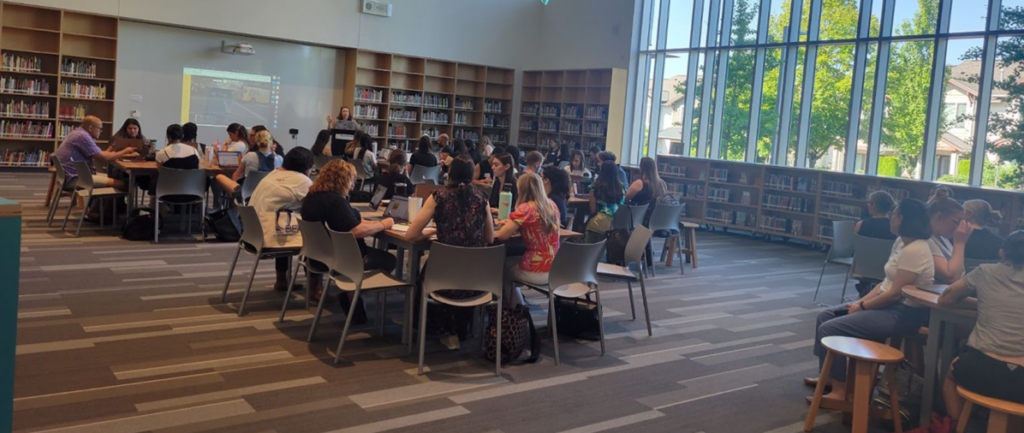By Beaverton School District Chief Information Officer Steven Langford

This year marks my 17th school start as CIO for the Beaverton School District. Sitting with teachers as a part of our New Staff Academy recently, I reflected back to my first days in this role. When I arrived in Beaverton all those years ago, I remember getting my keys and a staff badge, meeting some IT staff, and then being escorted to my office. Sitting in my chair in a mostly empty room, I thought to myself, “Well, now what?” I remember those early days of coming from a previous role that I knew so well into a new environment where I felt like I knew very little, and was unable to help anyone.
Take a moment and think back to when you started a new role. Does that sound like your onboarding experience? Did you feel like you were a part of the organization? How did you get the tools and information you needed to be successful?
A lot has changed in the Beaverton School District since I arrived. Our new teachers and staff have a variety of sophisticated applications and technologies at their disposal to support student learning, collaborate with their peers to deepen their practice, and to engage families to support our learners. These tools and applications have increased the need for us to focus on onboarding to both provide staff the best entry into their new role and also make sure we do not lose momentum with the tools we use to engage students and families.
“Our new teachers and staff have a variety of sophisticated applications and technologies at their disposal to support student learning, collaborate with their peers to deepen their practice, and to engage families to support our learners.”
As a result, our onboarding approach has evolved. Gone are the days of my experience, where a staff member shows up to a building, receives their keys and is ushered into a classroom, cubicle or office. We have built a strong onboarding program to ensure our new colleagues have the tools they need to start strong and as a school system, not lose ground in our student and family engagement efforts and investments.

Customized experience is key

As we developed our onboarding, we learned early that there is not a one-stop approach to welcoming new employees to our school system. While there is a lot of information that pertains to all employees, onboarding needs to be customized to employee groups (admin, classified, certified) and by functional area. Designing onboarding with awareness of the similarities and differences by employee role can create efficiencies in sharing communication and culture while allowing role-specific information to be shared.
Information pertaining to all employees is shared through our intranet portal and allows new employees the convenience to access when needed throughout the year.
Beaverton recently adopted a new Strategic Plan. It is critical that our new and existing employees understand the plan and their role in supporting our students and families. This information is best shared not only through web resources but in person, so our new staff can ask questions and hear from others in the organization.
For our teachers, onboarding has evolved into a multi-day experience. They have time in their building to connect with peers, as well as time with department leaders and training on our district communications and learning tools. Staff leave the training sessions understanding why it is critical to use these applications: so our students and families have a consistent learning and communication experience. They also leave with the confidence to use these tools in their practice.
For our IT employees, particularly those serving in schools as technology support specialists, onboarding also includes a number of days shadowing IT staff. Our new IT employees begin their work at the side of another experienced IT staff member who helps them understand the role, answers questions and guides the new employee from watching to participating to owning the work and their role. While this takes time and impacts the work of another IT staff member, feedback from new IT staff has been very positive in providing the time and structure to give them confidence and understanding of their work.
Onboarding is a process, not an event
While we spend much time at the front end to support new staff, onboarding is best understood as a process that takes time and that length of time varies with staff. Intranet resources, mentoring and collaboration tools are all used throughout that first year to make sure staff have the tools they need to be successful. For our new administrators, there are regularly scheduled meetings throughout the year to check in with other district leaders. These meetings are specifically focused on building relationships and sharing information that might be critical at certain times during that first year.
Onboarding is the best investment for sustaining engagement
As a district, we have spent significant financial resources to get the best tools to support student learning in the classroom, allow staff to collaborate and grow in their work, and to engage our students, families and community. To ensure we sustain that investment, we need our new employees to understand the applications and reasons we use them so those investments are not wasted. Supporting our new staff through a strong onboarding process is one way we sustain engagement now and into the future of their work.
ParentSquare is here to help you build strong partnerships that empower your students and foster lifelong learners within your communities. Learn more about these features and many more by booking a demo today!







